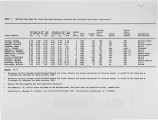| Abstract |
Several distinctions exist between the combustion of low grade solid fuels and the combustion of liquid and gaseous fuels, and these differences present challenges to modeling the performance of such fuels in industrial furnaces and boilers. Fundamentally, the combustion of solid fuels is governed by two types of reactions: 1) the pyrolysis of the solid materials, and 2) the gas-solids char oxidation reactions. Practically, combustion of such materials is influenced by the following factors: 1) their high reactivity, leading to rapid rates of pyrolysis and a high proportion of products being volatiles, 2) substantial difficulties in achieving near complete combustion (with carbon conversion rates being measured in the 94 - 99 percent range), and 3) the tendency of such fuels to include entrained moisture and dirt. Consequently, vendors of low grade fuel and waste combustion systems design units with relatively low rates of heat release (i.e. 10,000 - 17,000 Btu/cu. ft.-hr), and with significant flexibility in the combustion air systems. Funher, combustion air temperatures are typically low, ranging from ambient to 550 F. Given these considerations, a tailored solid fuel combustion model, SFCOMB, has been constructed around a modified form of the Gordon-McBride thermodynamic model. SFCOMB includes a series of inputs in the PREP module, and preliminary calculations in the PREUMS component. These calculations include adjusting the fuel composition "seen" by the Gordon-McBride model for differences in carbon conversion efficiency. These differences are further translated into adjustments in the equivalence ratio. The Gordon-McBride model is then run using the adjusted data. Inputs to PREP are also used in the EFFICIENCY component of SFCOMB. EFFICIENCY is used to calculate the useful energy released from combustion of low grade fuels. The input from PREP is then used to drive the model component, TRACE. The equations of TRACE are used for estimating uncontrolled paniculate emissions; oxides of nitrogen; polyaromatic hydrocarbons (PAH's); dioxins and furans; and select trace metals. Output from the model includes system efficiencies, estimation of flame temperatures, product gas compositions, and uncontrolled airborne emissions (before air quality control system). Outputs also include bonom ash compositions. The outputs have been compared to measurements obtained from several client facilities. They have been used as inputs to numerous analyses, including both feasibility studies and risk assessments. |








































